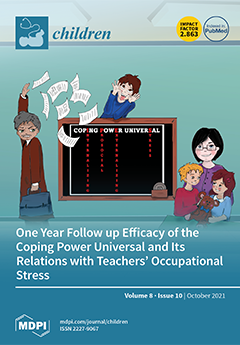Open AccessArticle
Exploring the Relation between Atopic Diseases and Lifestyle Patterns among Adolescents Living in Greece: Evidence from the Greek Global Asthma Network (GAN) Cross-Sectional Study
by
George Antonogeorgos, Kostas N. Priftis, Demosthenes B. Panagiotakos, Philippa Ellwood, Luis García-Marcos, Evangelia Liakou, Alexandra Koutsokera, Pavlos Drakontaeidis, Dafni Moriki, Marina Thanasia, Maria Mandrapylia and Konstantinos Douros
Cited by 17 | Viewed by 3656
Abstract
Introduction: Diet and physical activity might be associated with the risk of allergic diseases in childhood. However, evidence in literature is sparse and diverse. We aim to examine the associations between four healthy dietary consumption pattern drinks, plus the adherence to a physically
[...] Read more.
Introduction: Diet and physical activity might be associated with the risk of allergic diseases in childhood. However, evidence in literature is sparse and diverse. We aim to examine the associations between four healthy dietary consumption pattern drinks, plus the adherence to a physically active lifestyle with atopic diseases (asthma, allergic rhinitis and eczema) in adolescence and their relative importance. Methods: A total of 1934 adolescents (921 boys, 47.5%) and their parents completed a validated questionnaire assessing atopic diseases’ symptoms prevalence in the past 12 months, as well as nutritional and physical activity information. Four healthy dietary and one physical active lifestyle patterns were identified and logistic regression was applied to assess their relation with allergic diseases. Results: A high weekly consumption of fruits, vegetables and pulses and low consumption of unhealthy foods was negatively associated with all atopic symptoms while adherence to a physical active lifestyle was inversely associated with asthma and allergic rhinitis symptoms and dairy products with asthma and eczema symptoms in the past 12 months after adjustment for several confounders (all
p < 0.05). Fruits, vegetables and pulses consumption per week emerged as the most important lifestyle pattern negatively associated for all atopic diseases, after the adjustment for all the remaining lifestyle patterns and confounders (all
p < 0.05) Conclusions: Our findings suggest that a high fruit, vegetable and pulse intake should be the first lifestyle intervention every clinician and public health care worker evolving in the management of atopic adolescents should encourage and promote.
Full article






